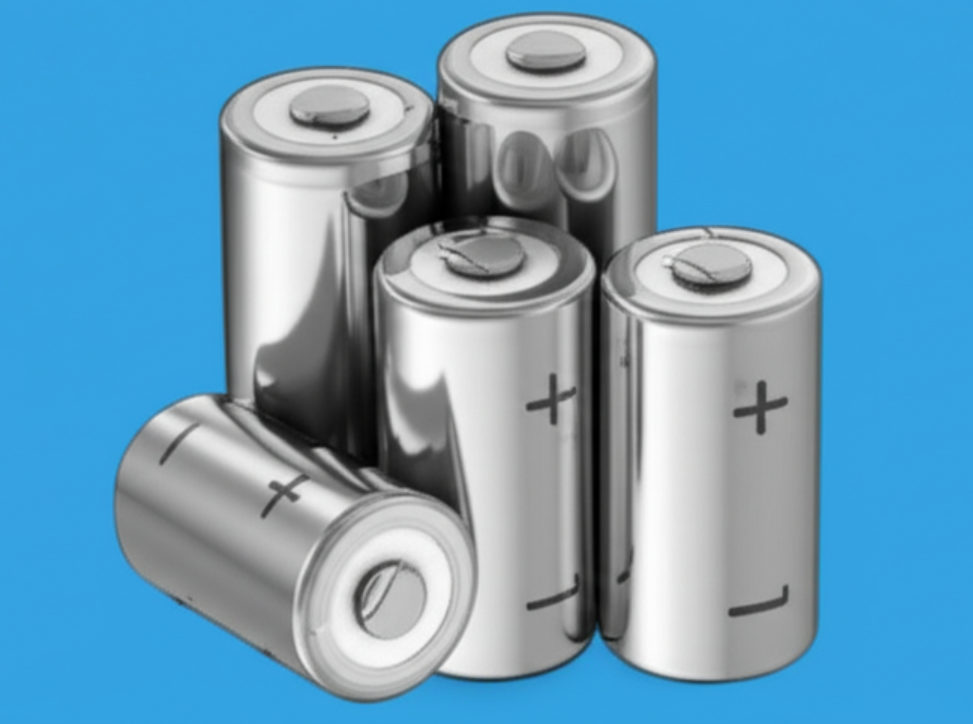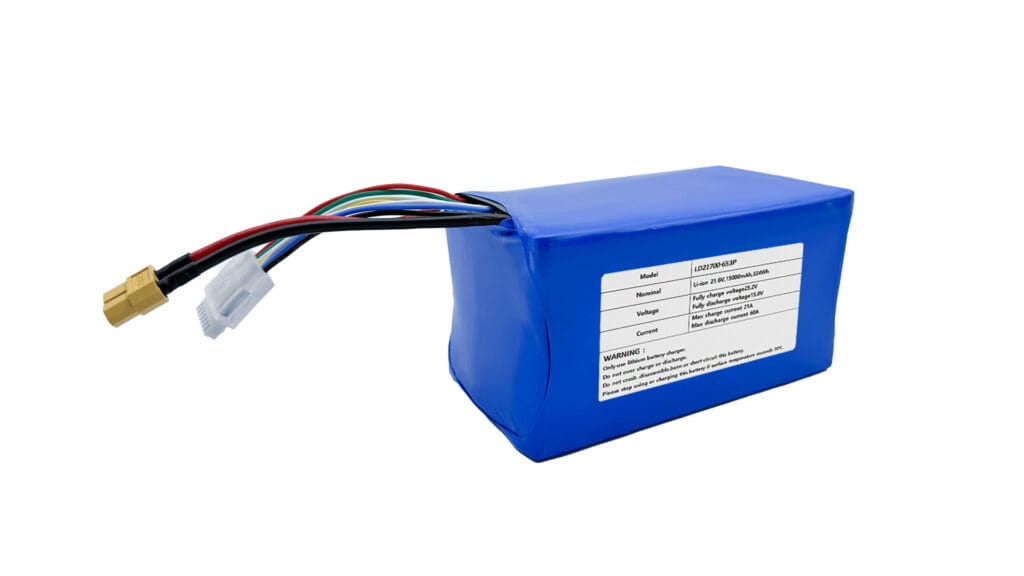The Power Within: Understanding Energy Density of Lithium ion Battery
In our increasingly electrified world, batteries have become the unsung heroes powering our daily lives. From the smartphones in our pockets to the electric vehicles revolutionizing transportation, energy storage technology is at the forefront of innovation. Among the various battery types available, lithium-ion (Li-ion) batteries have emerged as the dominant force, prized for their relatively high energy density, long cycle life, and lightweight design. But what exactly is energy density, and why is it so crucial for the continued advancement of these essential power sources?
This article delves into the core concept of energy density in lithium-ion batteries, exploring its definition, the factors that influence it, current advancements pushing its limits, and the profound impact it has on a wide range of applications. We will also look towards the future, examining the trends and outlook for this critical metric that will shape the next generation of energy storage.
What is Energy Density in Lithium-ion Batteries?
At its core, energy density refers to the amount of energy a battery can store relative to its size or weight. It’s a crucial metric that dictates how long a device can operate or how far an electric vehicle can travel on a single charge. In the context of lithium-ion batteries, energy density is typically expressed in two primary ways:
- Gravimetric Energy Density (Wh/kg): This measures the energy stored per unit of mass, expressed in watt-hours per kilogram. A higher gravimetric energy density means a lighter battery can store more energy. This is particularly important for applications where weight is a critical factor, such as electric vehicles and portable electronics.
- Volumetric Energy Density (Wh/L): This measures the energy stored per unit of volume, expressed in watt-hours per liter. A higher volumetric energy density allows for more energy to be packed into a smaller space. This is crucial for applications where space is limited, such as smartphones and laptops.
Think of it like the fuel tank in a car. A fuel tank with higher energy density (either by weight or volume) can hold more fuel, allowing the car to travel a longer distance. Similarly, a lithium-ion battery with high energy density allows devices to run longer or vehicles to travel further without increasing the battery’s size or weight significantly.
The pursuit of higher energy density is driven by the desire for longer-lasting portable devices, electric vehicles with greater range, and more efficient grid-scale energy storage solutions.
Factors Affecting Energy Density
The energy density of a lithium-ion battery is not a fixed value but rather a complex interplay of several factors related to the materials used and the battery’s design:
- Electrode Materials: The choice of materials for the positive electrode (cathode) and the negative electrode (anode) has the most significant impact on energy density.
- Катод: Different cathode materials, such as Lithium Iron Phosphate (LFP), Lithium Nickel Manganese Cobalt Oxide (NMC), and Lithium Nickel Cobalt Aluminum Oxide (NCA), offer varying levels of energy density. Generally, NMC and NCA cathodes provide higher energy density compared to LFP, but they may have trade-offs in terms of cost, safety, and cycle life.
- Анод: Graphite is the most commonly used anode material, offering a good balance of performance and cost. However, researchers are actively exploring alternative materials like silicon, which has a much higher theoretical capacity for lithium ions, potentially leading to significant increases in energy density. Incorporating even a small percentage of silicon into graphite anodes can yield noticeable improvements.
- Cell Design and Structure: The way individual battery cells are designed and assembled also influences the overall energy density of a battery pack. Innovations in cell architecture, such as more efficient packing and thinner separators, can reduce the non-active material within the battery, leading to a higher energy density at the pack level.
- Электролит: The electrolyte, the medium that allows lithium ions to move between the electrodes, plays a crucial role in the battery’s performance and can indirectly affect energy density. Advanced electrolytes are being developed to improve ionic conductivity, widen the operating voltage window (which can increase energy density), and enhance safety.
- Additives and Manufacturing Processes: Even small additions of specific materials or optimizations in the manufacturing process can contribute to incremental gains in energy density and overall battery performance.
Current State and Advancements in Energy Density
Commercially available lithium-ion batteries today offer a wide range of energy densities depending on their application and the specific chemistry used. For instance, batteries in smartphones might have a gravimetric energy density in the range of 150-250 Wh/kg, while those in modern electric vehicles can reach 200-300 Wh/kg or even higher in some advanced models.
The quest for even greater energy density is a central focus of ongoing research and development. Several promising avenues are being explored:
- Твердотельные аккумуляторы: These batteries replace the liquid electrolyte with a solid one, offering the potential for significantly higher energy density, improved safety, and longer lifespan. While still in the development and scaling phases, solid-state technology is considered a game-changer for future energy storage.
- Lithium-Metal Anodes: Replacing traditional graphite anodes with lithium metal offers a significantly higher theoretical capacity, which could drastically increase energy density. However, challenges related to dendrite formation (which can cause short circuits and safety issues) need to be overcome for this technology to be widely adopted.
- Advanced Cathode Materials: Research continues to focus on developing new cathode materials with higher lithium content and operating voltages, pushing the limits of energy storage capacity. This includes exploring novel compositions and surface coatings to improve stability and performance.
- Silicon-Dominant Anodes: Overcoming the challenges associated with the volume expansion of silicon during charging and discharging is crucial for realizing the full potential of silicon anodes in boosting energy density. Researchers are exploring various strategies, such as nanostructured silicon and composite materials.
It’s important to note that increasing energy density often involves trade-offs. For example, pushing for higher energy density might sometimes compromise the battery’s cycle life, safety, or cost. Therefore, a balanced approach is necessary to develop batteries that meet the specific requirements of different applications.
Applications Benefiting from High Energy Density
The impact of higher energy density in lithium-ion batteries is far-reaching across numerous sectors:
- Электромобили (EV): Increased energy density directly translates to longer driving ranges, alleviating range anxiety and making EVs a more practical option for a wider range of consumers. It also allows for smaller and lighter battery packs for a given range, improving vehicle efficiency and handling. The evolution of EVs, from early models with limited range to today’s vehicles capable of hundreds of miles on a single charge, is a testament to the advancements in battery energy density.
- Портативная электроника: Smartphones, laptops, tablets, and other portable devices benefit immensely from higher energy density batteries, allowing for longer usage times between charges and enabling slimmer and lighter designs without sacrificing battery life. The sleek and powerful devices we use daily are largely enabled by the progress in battery technology.
- Накопители энергии в масштабах сети: Higher energy density in grid storage solutions allows for more energy to be stored in a smaller footprint, making it more feasible to integrate renewable energy sources like solar and wind into the electricity grid. This can lead to a more stable and sustainable energy infrastructure.
- Другие применения: Numerous other applications, including drones, medical devices, power tools, and even aerospace, benefit from the lighter weight and longer operating times enabled by high energy density lithium-ion batteries.
Future Trends and Outlook
The future of lithium-ion battery technology is inextricably linked to the continued pursuit of higher energy density. Industry experts predict significant advancements in the coming years, with targets exceeding current capabilities through the implementation of technologies like solid-state electrolytes and advanced electrode materials.
These advancements will have a transformative impact on various industries, accelerating the adoption of electric vehicles, enabling more sophisticated portable electronics, and facilitating the transition to a cleaner energy grid. However, alongside the focus on energy density, there will also be increasing emphasis on other critical factors such as safety, cost reduction, faster charging times, and the sustainability of battery materials and manufacturing processes.
Заключение
Energy density is a fundamental metric that defines the capabilities and potential of lithium-ion batteries. Its continuous improvement is driving innovation across numerous sectors, enabling longer-lasting portable devices, longer-range electric vehicles, and more efficient energy storage solutions. As research and development continue to push the boundaries of materials science and battery design, we can expect even more significant advancements in energy density, paving the way for a more electrified and sustainable future.
Lan Dazzle—Your Expert Partner for High Energy Density Lithium-ion Batteries
На сайте Lan Dazzle, we specialize in designing and manufacturing custom lithium-ion battery solutions tailored to your unique requirements. Whether you’re building cutting-edge drones, medical devices, wearable tech, or electric tools, we offer batteries that combine high energy density with exceptional reliability and safety.
With years of experience in crafting литий-полимерные батареи на заказ и аккумуляторная батарея 21700, our engineering team ensures that every battery meets the highest industry standards. Our batteries are trusted in applications that demand both performance and endurance.
Contact us directly at info@landazzle.com to discuss how we can power your innovation with energy-efficient lithium-ion battery solutions.
ЧАСТО ЗАДАВАЕМЫЕ ВОПРОСЫ
- What exactly is energy density in a lithium-ion battery? Energy density refers to the amount of energy a battery can store relative to its weight (gravimetric, in Wh/kg) or volume (volumetric, in Wh/L). It essentially tells you how much “power” is packed into a battery of a certain size or weight.
- Why is higher energy density better for lithium-ion batteries? Higher energy density allows for longer operating times for portable devices, greater driving range for electric vehicles without increasing battery size or weight, and more efficient use of space for grid-scale storage.
- What are the main factors that influence the energy density of a lithium-ion battery? The primary factors are the materials used in the cathode and anode, the battery cell design and structure, the electrolyte, and advancements in additives and manufacturing processes.
- How does the energy density of a lithium-ion battery affect the range of an electric car? There is a direct correlation. A battery with higher energy density can store more energy for the same weight or volume, allowing the electric car to travel a longer distance on a single charge.
- Are there any drawbacks to increasing the energy density of lithium-ion batteries? While highly desirable, increasing energy density can sometimes lead to trade-offs in terms of safety, cycle life (how many times the battery can be charged and discharged), and cost.
- What are some of the latest advancements in lithium-ion battery technology aimed at improving energy density? Key advancements include the development of solid-state batteries, lithium-metal anodes, advanced cathode materials with higher capacity, and silicon-dominant anodes.
- How is energy density different from power density in batteries? Energy density is the total amount of energy a battery can store, while power density is the rate at which that energy can be delivered (how quickly the battery can discharge). Think of energy density as the size of the fuel tank and power density as how quickly the car can accelerate.





